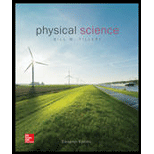
Physical Science
11th Edition
ISBN: 9780077862626
Author: Bill Tillery, Stephanie J. Slater, Timothy F. Slater
Publisher: McGraw-Hill Education
expand_more
expand_more
format_list_bulleted
Textbook Question
Chapter 7, Problem 49AC
The
a. a new explanation of gravity.
b. an analysis of how space and time are changed by motion.
c. an analysis of how fast-moving clocks run faster.
d. based on a changing velocity of light.
Expert Solution & Answer
Want to see the full answer?
Check out a sample textbook solution
Students have asked these similar questions
6. Two men are running at constant speeds along a circular track 1,350 meters in circumference. Running in opposite direction, they meet each other every 3 minutes. Running in the same directions, they meet each other every 27 minutes. Determine the speed of the faster man in kph. A. 20 C. 15 B. 18 D. 12
9. Which of the following was Einstein’s Second Postulate to the Special Theory of Relativity?The laws of physics are the same in all frames of reference that are moving uniformly.Waves had to have some medium to travel through.A beam of light that traveled parallel to the aether would take longer than the beam that traveled perpendicularly to the aether.The speed of light is constant and is independent of the motion of the source or the observer.
a 1 kilogram ball is dropped from the top of a building that is 180 meters high. what is the velocity of the ball after 4 seconds
Chapter 7 Solutions
Physical Science
Ch. 7 - 1. Which of the following is luminous?
a. Moon
b....Ch. 7 - Prob. 2ACCh. 7 - Prob. 3ACCh. 7 - Prob. 4ACCh. 7 - 5. Light interacts with matter by which...Ch. 7 - Prob. 6ACCh. 7 - 7. Light is said to travel in straight-line paths,...Ch. 7 - 8. The image you see in a mirror is
a. a real...Ch. 7 - Prob. 9ACCh. 7 - Prob. 10AC
Ch. 7 - Prob. 11ACCh. 7 - 12. The component colors of sunlight were first...Ch. 7 - 13. The color order of longer-wavelength to...Ch. 7 - Prob. 14ACCh. 7 - 15. Polarization of light is best explained by...Ch. 7 - 16. Light in one plane is transmitted and light in...Ch. 7 - Prob. 17ACCh. 7 - Prob. 18ACCh. 7 - Prob. 19ACCh. 7 - Prob. 20ACCh. 7 - 21. Fiber optics transmits information using
a....Ch. 7 - 22. A luminous object
a. reflects a dim blue-green...Ch. 7 - Prob. 23ACCh. 7 - 24. The difference in the light emitted from a...Ch. 7 - Prob. 25ACCh. 7 - 26. An image that is not produced by light rays...Ch. 7 - Prob. 27ACCh. 7 - Prob. 28ACCh. 7 - 29. Which of the following can only be explained...Ch. 7 - 30. The polarization behavior of light is best...Ch. 7 - Prob. 31ACCh. 7 - Prob. 32ACCh. 7 - Prob. 33ACCh. 7 - Prob. 34ACCh. 7 - 35. The electromagnetic wave model defines an...Ch. 7 - 36. Of the following, the electromagnetic wave...Ch. 7 - 37. Of the following, the electromagnetic wave...Ch. 7 - Prob. 38ACCh. 7 - 39. Green grass absorbs
a. yellow light.
b. only...Ch. 7 - Prob. 40ACCh. 7 - Prob. 41ACCh. 7 - Prob. 42ACCh. 7 - Prob. 43ACCh. 7 - Prob. 44ACCh. 7 - 45. Polaroid sunglasses work best in eliminating...Ch. 7 - 46. The condition of farsightedness, or hyperopia,...Ch. 7 - Prob. 47ACCh. 7 - Prob. 48ACCh. 7 - 49. The special theory of relativity is
a. a new...Ch. 7 - Prob. 50ACCh. 7 - 51. Comparing measurements made on the ground to...Ch. 7 - 1. What determines if an electromagnetic wave...Ch. 7 - 2. What model of light does the polarization of...Ch. 7 - Prob. 3QFTCh. 7 - 4. What model of light is supported by the...Ch. 7 - Prob. 5QFTCh. 7 - Prob. 6QFTCh. 7 - 7. When does total internal reflection occur? Why...Ch. 7 - 8. Why does a highway sometimes appear wet on a...Ch. 7 - 9. How can you tell if a pair of sunglasses is...Ch. 7 - 10. What conditions are necessary for two light...Ch. 7 - 11. Explain why the intensity of reflected light...Ch. 7 - Prob. 12QFTCh. 7 - Prob. 13QFTCh. 7 - Prob. 14QFTCh. 7 - 1. Clarify the distinction between light...Ch. 7 - 2. Describe how you would use questions alone to...Ch. 7 - 3. Use a dialogue as you “think aloud."...Ch. 7 - 4. Compare and contrast the path of light through...Ch. 7 - 5. Analyze how the equation E = hf could mean that...Ch. 7 - 6. How are visible light and a radio wave...Ch. 7 - Prob. 1PEBCh. 7 - Prob. 2PEBCh. 7 - 3. How many minutes are required for a radio...Ch. 7 - 4. An incident light ray strikes a mirror with an...Ch. 7 - 5. The speed of light through a transparent...Ch. 7 - Prob. 6PEBCh. 7 - Prob. 7PEBCh. 7 - 8. The wavelength of light from a monochromatic...Ch. 7 - Prob. 9PEBCh. 7 - 10. At what rate must electrons in a wire vibrate...Ch. 7 - Prob. 11PEBCh. 7 - Prob. 12PEBCh. 7 - Prob. 13PEBCh. 7 - Prob. 14PEBCh. 7 - Prob. 15PEB
Knowledge Booster
Learn more about
Need a deep-dive on the concept behind this application? Look no further. Learn more about this topic, physics and related others by exploring similar questions and additional content below.Similar questions
- Choose the option from each pair that makes the following statement correct. According to an observer at rest, moving clocks run more [(a) slowly; (b) quickly] than stationary clocks and moving rods are [ (c) longer; (d) shorter] than stationary rods.arrow_forwardA supernova explosion of a 2.001031 kg star produces 1.001044 J of energy. (a) How many kilograms of mass are converted to energy in the explosion? (b) What is the ratio m/m of mass destroyed to the original mass of the star?arrow_forwardLight travels at a speed of about 3 103 m/s. (a) How many miles down a pulse of light travel in a time interval of 0.1 s, which is about the blink of an eye? (b) Compare this distance to the diameter of Earth.arrow_forward
- A space probe on the surface of Mars sends a radio signal back to the Earth, a distance of 7.86 107 km. Radio waves travel at the speed of light (3.00 108 m/s). How many seconds does it take the signal to reach the Earth?arrow_forwardCan classical physics be used to accurately describe a satellite moving at a speed of 7500 m/s? Explain why or why not.arrow_forwardThe sun energy at a rate of 3.85×10 26 W by the fusion of hydrogen. About 0.7% of each kilogram of hydrogen goes into the energy generated by the Sun. (a) How many kilograms of hydrogen undergo fusion each second? (b) If the sun is 90.0% hydrogen and half of this can undergo fusion before the sun changes character, how long could it produce energy at its current rate? (c) How many kilograms of mass is the sun losing per second? (d) What fraction of its mass will it have lost in the time found in part (b)?arrow_forward
- You have an assistantship with a math professor in a future world where space travel is common and spacecraft regularly achieve near-light speeds. A spacecraft has taken of recently to carry individuals to colonize an Earth-like planet around a nearby star. Your professor, who remains on Earth, is teaching the students on the spacecraft via the future version of distance learning. It is time for the students on the spacecraft to take a math exam. The professor wishes the students to have a time interval tp = 2.00 h to complete the exam, so just as the spacecraft passes Earth on its last trip around the Sun at its constant cruising speed of 0.960c, she sends a signal to the proctor to have the students begin the exam. Knowing of your experience in physics courses, the professor asks you to determine the time interval through which she should wait before sending a radio signal to the departing spacecraft to tell the proctor to have the students stop working on the exam.arrow_forwardAccording to the National Academy of Sciences, the Earths surface temperature has risen about 1F since 1900. There is evidence that this climate change may be due to human activity. The organizers of World Jump Day argue that if the Earth were in a slightly larger orbit, we could avoid global warming and climate change. They propose that we move the Earth into this new orbit by jumping. The idea is to get people in a particular time zone to jump together. The hope is to have 600 million people jump in a 24-hour period. Lets see if it will work. Consider the Earth and its inhabitants to make up the system. a. Estimate the number of people in your time zone. Assume they all decide to jump at the same time; estimate the total mass of the jumpers. b. What is the net external force on the Earthjumpers system? c. Assume the jumpers use high-tech Flybar pogo sticks (Fig. P8.32), which allow them to jump 6 ft. What is the displacement of the Earth as a result of their jump? d. What happens to the Earth when the jumpers land?arrow_forwardTidal friction is slowing the rotation of the Earth. As a result, the orbit of the Moon is increasing in radius at a rate of approximately 4 cm/year. Assuming this to be a constant rate, how many years will pass before the radius of the Moon's orbit increases by 3.84106 m (1%)?arrow_forward
arrow_back_ios
arrow_forward_ios
Recommended textbooks for you
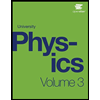 University Physics Volume 3PhysicsISBN:9781938168185Author:William Moebs, Jeff SannyPublisher:OpenStax
University Physics Volume 3PhysicsISBN:9781938168185Author:William Moebs, Jeff SannyPublisher:OpenStax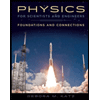 Physics for Scientists and Engineers: Foundations...PhysicsISBN:9781133939146Author:Katz, Debora M.Publisher:Cengage Learning
Physics for Scientists and Engineers: Foundations...PhysicsISBN:9781133939146Author:Katz, Debora M.Publisher:Cengage Learning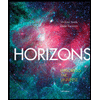 Horizons: Exploring the Universe (MindTap Course ...PhysicsISBN:9781305960961Author:Michael A. Seeds, Dana BackmanPublisher:Cengage Learning
Horizons: Exploring the Universe (MindTap Course ...PhysicsISBN:9781305960961Author:Michael A. Seeds, Dana BackmanPublisher:Cengage Learning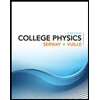 College PhysicsPhysicsISBN:9781305952300Author:Raymond A. Serway, Chris VuillePublisher:Cengage Learning
College PhysicsPhysicsISBN:9781305952300Author:Raymond A. Serway, Chris VuillePublisher:Cengage Learning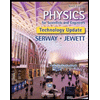 Physics for Scientists and Engineers, Technology ...PhysicsISBN:9781305116399Author:Raymond A. Serway, John W. JewettPublisher:Cengage Learning
Physics for Scientists and Engineers, Technology ...PhysicsISBN:9781305116399Author:Raymond A. Serway, John W. JewettPublisher:Cengage Learning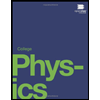 College PhysicsPhysicsISBN:9781938168000Author:Paul Peter Urone, Roger HinrichsPublisher:OpenStax College
College PhysicsPhysicsISBN:9781938168000Author:Paul Peter Urone, Roger HinrichsPublisher:OpenStax College

University Physics Volume 3
Physics
ISBN:9781938168185
Author:William Moebs, Jeff Sanny
Publisher:OpenStax

Physics for Scientists and Engineers: Foundations...
Physics
ISBN:9781133939146
Author:Katz, Debora M.
Publisher:Cengage Learning

Horizons: Exploring the Universe (MindTap Course ...
Physics
ISBN:9781305960961
Author:Michael A. Seeds, Dana Backman
Publisher:Cengage Learning

College Physics
Physics
ISBN:9781305952300
Author:Raymond A. Serway, Chris Vuille
Publisher:Cengage Learning

Physics for Scientists and Engineers, Technology ...
Physics
ISBN:9781305116399
Author:Raymond A. Serway, John W. Jewett
Publisher:Cengage Learning

College Physics
Physics
ISBN:9781938168000
Author:Paul Peter Urone, Roger Hinrichs
Publisher:OpenStax College
Time Dilation - Einstein's Theory Of Relativity Explained!; Author: Science ABC;https://www.youtube.com/watch?v=yuD34tEpRFw;License: Standard YouTube License, CC-BY